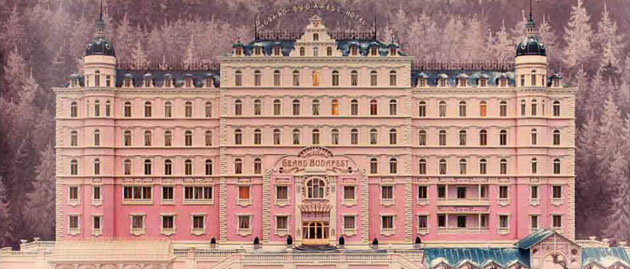Adam Stockhausen

AS: How was working with Spielberg’s DP Janusz Kaminski? Is he really involved in the production design?
AS: Absolutely. He’s a fun guy and a wonderful artist and it was just great. We looked at every location together. He looked at all the drawings of what I was planning to do. How we were going to light the scenes is always a critical part of the discussion. In a way it’s the most important part. If you can’t see what’s going on it doesn’t matter what the set is. It was a fundamental part of the discussion at every location and every set and he was right there at the center of it.
AS: In terms of practical lighting fixtures and windows?
AS: Coming up with an answer to the question, What’s the light for this scene? Are we in a box with no windows? Which might be okay if that’s right for the scene. Or, How does the lighting for this piece of the story compare to the lighting needs for the other parts of the story? This movie goes from New York to Berlin and the feeling of the light is different in the different parts of the story. And so we were trying to make sure that the scenery allows for that.
AS: In contrast, how was it like working with Wes Anderson’s DP Robert Yeoman?
AS: Bob is just the sweetest, greatest, most laid-back, awesome DP. What we do a lot of on Wes’ movies is we plan these choreographed, intricate camera moves and the lighting is central to that plan. It’s not the kind of thing where you can think it up on the day. Quite often we’re moving and spinning and seeing a lot of territory so the lighting has to be either integrated into the scene or delicately placed where it’s going to work. Like for instance in the lobby of the Grand Budapest Hotel. We worked together for a long time trying to plan all these practicals. There are thousands of practicals in that hotel! In the introduction scene when we’re walking through the hotel and Zero’s being interviewed by Monsieur Gustave we quickly see that entire lobby. Bob and I sat and worked out the plan for the practicals and how much light do we need out of them and how many of them do we need and where do they need to go.
AS: I noticed that the lobby changed for different time periods and that at one point there were a bunch of fluorescents on the ceiling.
AS: For the sixties we had this idea that the Brutalist architecture of the Soviet period had a way of roughly plastering over the delicate elements of what had been underneath. You’ll take a beautiful building and slap wood paneling over it. The location where we shot the dining room scene had this balcony with a beautiful rail frieze of angels. At one point it was renovated and the angel’s heads stuck out too far because they were going to plaster over it with some kind of panel. So they just knocked all the heads off the angels, because they were in the way. You can actually see that balcony rail in the movie for a split second in a scene when Zero and Agatha are on a date at the movies.
This was one of my favorite films last year with some of my favorite actors. I love being able to read about how it all came to life through the production designer and thank you very much for creating a site where aspiring Production Design/Art Directors, such as myself, can come and learn from the best. Thank you!